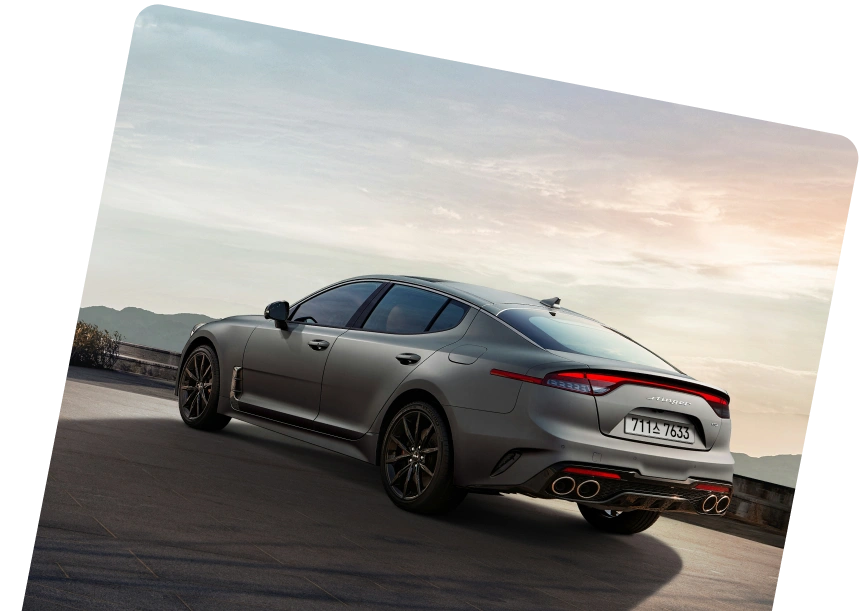Jaguar has a history of making truly iconic vehicles. Classics like the XK120, C-type, and E-type have made their mark in automotive history. Beyond sports cars, Jaguar also offers top-notch SUVs, including the F-Pace and the fully electric I-Pace.
But if you’re looking to buy something different from the usual German saloons, Jaguar has two standout executive options: the Jaguar XE or Jaguar XF. What’s the difference between them? Is one better than the other?
Today, we’ll explore the XE vs. XF comparison. Even though they seem quite similar at first glance, we’ll help you decide which model stands out in terms of comfort, performance, interior and technology, space and practicality, and more. Off we go!
Prices
A new Jaguar XE is a bit less expensive than the Jaguar XF at every trim level, with a price difference of about £3,000 for the entry-level R Dynamic S. This amount could be used to customise your XE with options and different paint colours. Both models offer a lot of features, like keyless entry and start and alloy wheels as standard, but the higher cost of the XF mainly comes from its extra space.
In the used car market, the price gap between the Jaguar XE and XF depends on mileage, condition, and service history. So, the cost won’t always match the key differences seen with new cars.
Engines

Jaguar XE
Choosing between the Jaguar XE and XF is hard because they offer similar engine choices. Both models come with petrol and diesel engines, along with mild hybrid technology.
For the Jaguar XF models, the diesel engine is a 2.0-litre four-cylinder that delivers nearly 60 mpg in the XE and over 50 mpg in the XF. There are also two petrol options: the P250, which has 250bhp and achieves around 34 mpg in the XE and 33 mpg in the XF, and the P300, which is the most powerful with 300bhp and comes with all-wheel drive in both models.

Jaguar XF
The Jaguar XE and XF both offer a fuel-efficient four-cylinder Ingenium diesel mild hybrid engine. This 204bhp engine comes with the choice of rear-wheel drive or all-wheel drive.
Dimensions and interior space
The XE:
- Length: 4,678 mm
- Width: 1,850 mm
- Height: 1,416 mm
The XF:
- Length: 4,962 mm
- Width: 1,890 mm
- Height: 1,456 mm
As a larger vehicle, the Jaguar XF offers more space than the XE. Specifically, the XF is 284mm longer and 14mm wider than the XE. There’s 20mm more headroom in the front seats and 68mm more legroom in the rear seats, so it’s more comfortable for taller rear-seat passengers.
Both the Jaguar XE and XF come with heated leather seats with 12-way electric adjustments for the driver and front passenger, with only a minor difference in terms of legroom. The XE’s lower ground clearance gives it a cockpit-like feel.
In terms of cargo space, the XF’s boot is 216 litres larger than the XE’s, but it has a smaller opening, which makes fitting larger items harder. For those needing more cargo space, the XF Sportbrake model is a great option — you get an additional 233 litres of cargo space and a larger boot opening.
Modern technology and performance
The XE and XF are pretty similar in terms of advanced technology but with some differences. The XF has an 11.4-inch screen, while the XE offers a 10-inch screen. It’s worth noting that the XE can be upgraded to Touch Pro Duo with an extra 10-inch screen for more functionality. Both models come with Jaguar’s Pivi Pro infotainment system, Apple CarPlay and Android Auto, Navigation Pro, and dual-zone climate control.
For the fastest acceleration and sports car performance, choose the Jaguar XE. It gets to 60mph quicker than the XF, sometimes by just a split second and other times by up to three seconds, depending on the engine.
Features like dynamic stability control, all-surface progress control, and torque vectoring by braking help the XE handle better and perform well. Plus, the XE is around 100kg lighter than the XF. The XF is still quick, though.
Styling and exterior design

Jaguar XE
The Jaguar XE and XF are pretty similar-looking, too, and that’s not a bad thing — they both have a sleek, stylish appearance. The XE recently updated its lights and bumpers to stay current, but both are starting to look a bit old compared to newer BMW and Mercedes models.

Jaguar XF
To tell XE vs. Jaguar XF apart, look at the front grilles and rear designs. The XF has different brake lights and a distinct lower bumper design, and the XE looks sportier.
The XF is also longer and wider than the XE, which gives it a more noticeable presence on the road. If you want a sports car feel, the XE is the better choice.
Interior features of Jaguars
Both the Jaguar XE and XF have high-quality interiors with great attention to detail. The low driving position and high window line give them a sporty feel. The controls are well-organised, so it’s easy to get comfortable.
In the Jaguar XE, the centre console is squared off with chrome trim, and the gear lever resembles a traditional gearstick, which is another detail creating the sporty vibe. The XF features a metal strip across the dashboard that can be upgraded to various wood finishes for a more classic Jaguar look.
In terms of quality, both models offer luxurious materials, including plush leather, and provide a performance-oriented driving position that can be adjusted for more comfort if needed.
Driving
Jaguar cars are famous for their precise and enjoyable driving. If you drive the sportier Jaguar XE, you’ll enjoy an experience similar to a hot hatch. Its firmer suspension makes it great for Britain’s twisty country roads. It’s still comfortable, and the optional adaptive dampers let you adjust the ride to your liking.
The larger XF isn’t as agile, but it handles country lanes well and is more comfortable for long motorway trips, like the luxurious Jaguar XJ.
Both the XE and XF models are excellent saloon cars for family and business use. They use a lot of aluminium, which improves their performance, handling, and fuel efficiency. The latest XF, for example, is up to 190kg lighter than the older model.
Jaguars running costs and efficiency

Jaguar XE
If you want the lowest running costs for the Jaguar XE, the D180 diesel is the best choice. It does well on the WLTP fuel economy tests and has low CO2 emissions, which is great for tax efficiency.
However, the D180 isn’t the cheapest engine to buy. The P250 is more affordable and delivers better performance. Some testers found that the P250 did better than expected, averaging about 38 mpg on a long weekend with varied driving. It’s easy to get this fuel economy on motorways, but it drops with lots of short trips or city driving.

Jaguar XF
The diesel Jaguar XF is the most efficient option in its respective range, too. The all-wheel drive version is slightly less efficient, the petrol engines are even more expensive to run, and the P300 is the least efficient.
Safety and reliability features
The Jaguar XE and Jaguar XF both received a top five-star rating in their Euro NCAP safety tests back in 2015. Both use Jaguar’s Lightweight Aluminium Architecture, which makes their bodies strong but light and provides excellent safety for passengers.
As for safety tech, both models feature a reversing camera, stability control, grip control, emergency braking assist, lane departure alert, blind spot monitoring, closing vehicle alert, back-up traffic alert, traffic sign recognition, and adjustable cruise control. The Jaguar XF also includes additional features like lane keep assistance, adjustable speed limiter, and driver condition monitoring.
In terms of reliability, neither car has major issues reported, and both come with a three-year warranty. Being part of Jaguar Land Rover, which is owned by TATA Motors, you can expect solid dependability from these vehicles.
Who is the Jaguar XF for?
The Jaguar XF is for those who seek a top-tier saloon that combines advanced technology, efficiency, and refinement. It’s perfect for drivers who want a high-performance vehicle with cutting-edge features, as well as a luxurious driving experience.
Who is the Jaguar XE for?
The Jaguar XE would be better for drivers who value the traditional rear-wheel-drive dynamics of an executive saloon but prefer a more affordable option compared to hatchback-based alternatives.
Jaguar XE vs. Jaguar XF: Which should you choose?
The Jaguar XE and XF look quite similar at first glance, mainly differing in size — the XE is more compact thanks to the smaller wheelbase. Generally, a higher number in a car’s name or a later letter in the alphabet indicates a larger vehicle.
However, smaller cars like the Jaguar XE are more suitable if you only occasionally need extra space. The XE is more fun to drive and more agile, while the XF will be much better for a small family and offers a smoother, more refined experience.
For something truly special, the Jaguar XE Project 8 is an exceptional high-performance option, although it’s in a different league than the standard XE. If you’re considering used models, both the XE and XF offer great value. Perhaps it’s best to avoid high-mileage cars unless you find one that’s been well cared for.
Overall, in a market dominated by German saloons, the Jaguar XE or XF is a unique and satisfying alternative.







